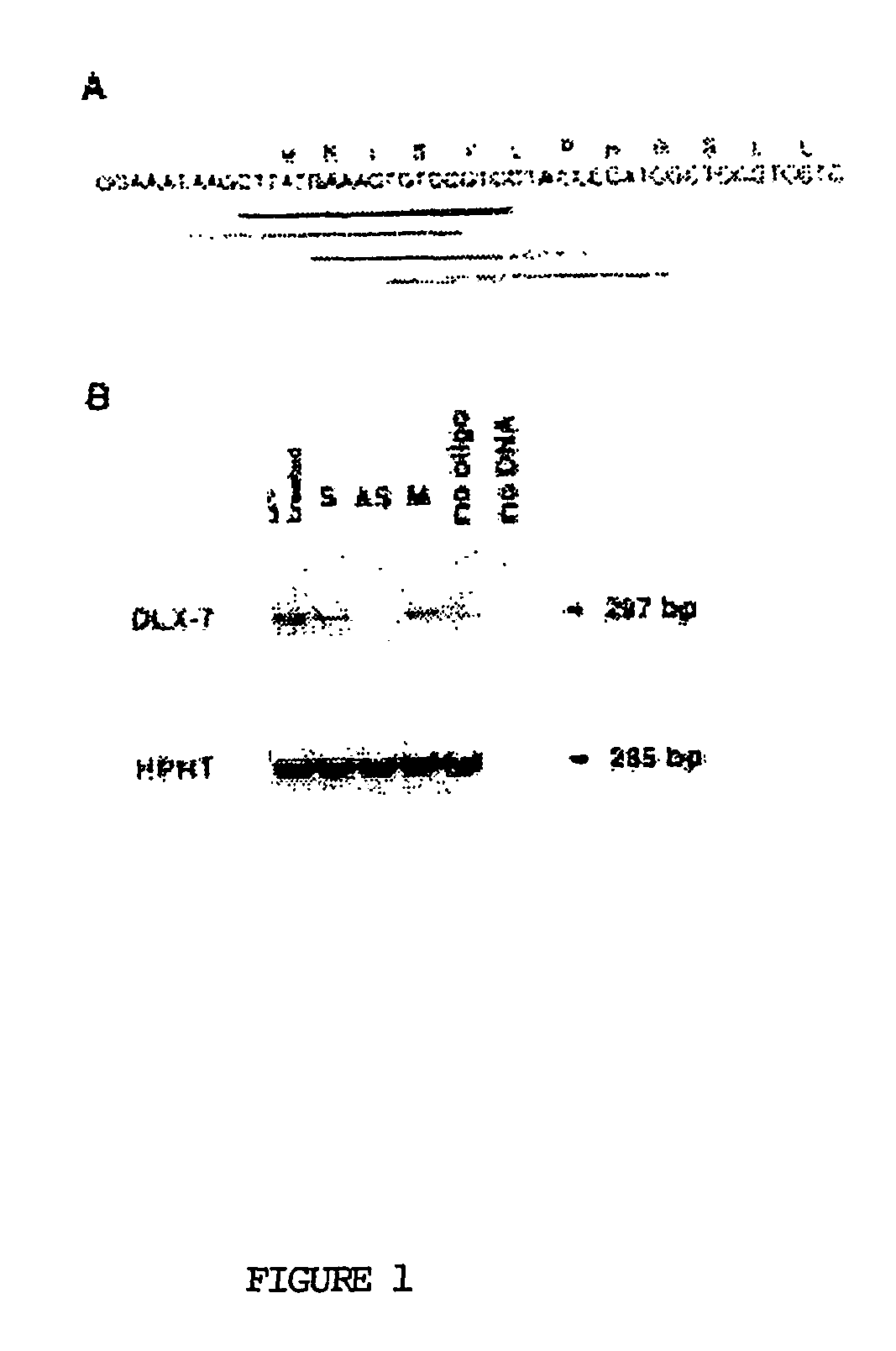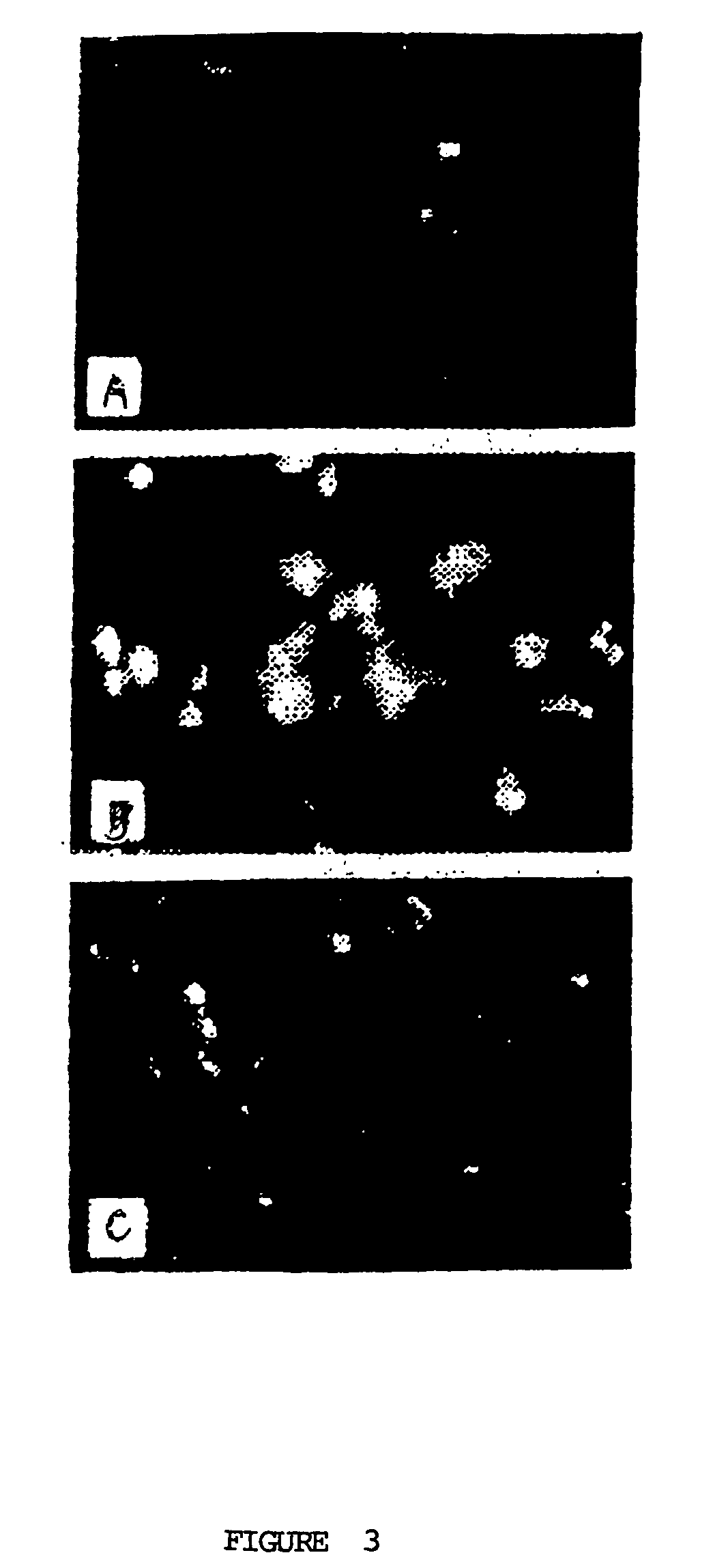Facile detection of polycythemia vera
a polycythemia and detection technology, applied in the field of hematologic disorders diagnosis, can solve the problems of consuming, laborious and expensive tests, and increasing the risk of thrombosis
- Summary
- Abstract
- Description
- Claims
- Application Information
AI Technical Summary
Benefits of technology
Problems solved by technology
Method used
Image
Examples
example 1
DLX7 gene is a Transcription Factor Gene Expressed in Erythroid Cells
[0026] A homeobox gene called DLX7 (Genbank accession U73328) [Nakamura S, Stock D W, Wydner K L, Bollekens J A, Takeshita K, Nagai B M, Chiba S, Kitamura T, Freeland T M, Zhao Z, Minowada J, Lawrence J B, Weiss K M, Ruddle F H. Genomic analysis of a new mammalian distal-less gene: DLX7. Genomics 38 314-324, 1996] was cloned and characterized. This gene was initially isolated as a part of a study to identify homeobox gene families expressed in lymphoid and non-lymphoid leukemia cell lines. In this screening, genes from the Drosophila distal-less family (called DLX in humans) constituted the largest proportion of the divergent homeobox genes (i.e., not of the classical HOX family) expressed in hematopoietic cells. Subsequent work by us and others identified six members of the human DLX family, located as pairs of genes at three locations in the genome.
[0027] The DLX7 gene was selected for further study, because it...
PUM
| Property | Measurement | Unit |
|---|---|---|
| mass | aaaaa | aaaaa |
| concentrations | aaaaa | aaaaa |
| Northern blotting | aaaaa | aaaaa |
Abstract
Description
Claims
Application Information
 Login to View More
Login to View More - R&D
- Intellectual Property
- Life Sciences
- Materials
- Tech Scout
- Unparalleled Data Quality
- Higher Quality Content
- 60% Fewer Hallucinations
Browse by: Latest US Patents, China's latest patents, Technical Efficacy Thesaurus, Application Domain, Technology Topic, Popular Technical Reports.
© 2025 PatSnap. All rights reserved.Legal|Privacy policy|Modern Slavery Act Transparency Statement|Sitemap|About US| Contact US: help@patsnap.com



